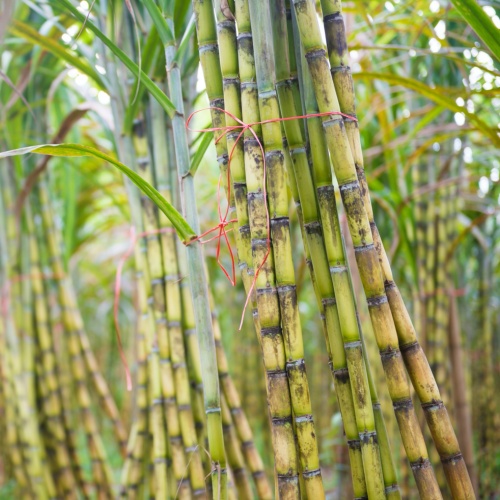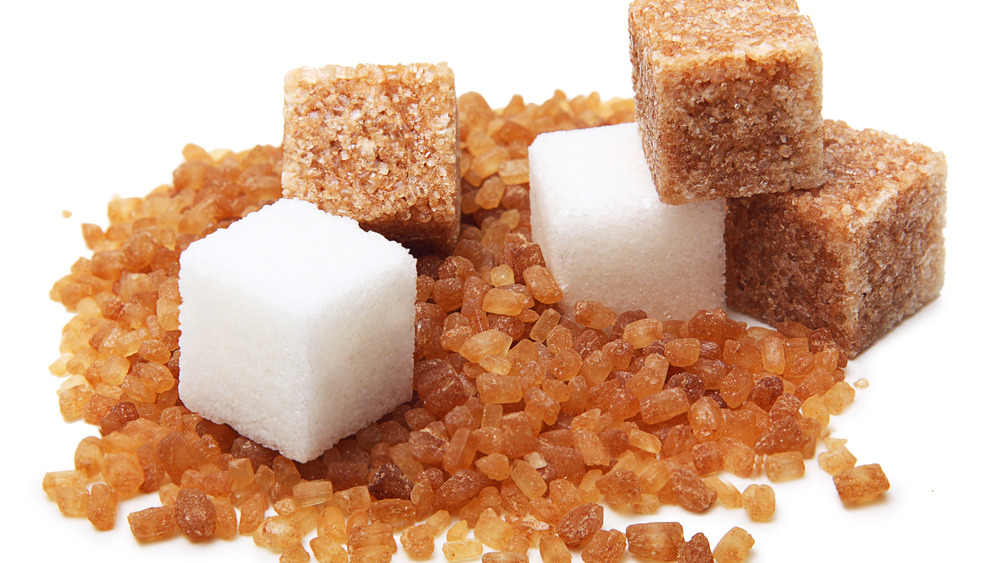Cane Sugar Processing: Innovative Techniques for High Quality Manufacturing
Cane Sugar Processing: Innovative Techniques for High Quality Manufacturing
Blog Article
A Comprehensive Overview to the Ecological Effect and Sustainability Practices in Walking Stick Sugar Processing
The ecological effect of walking stick sugar handling provides a complicated variety of difficulties that warrant cautious assessment. From dirt destruction and too much water use to the carbon impact associated with farming and manufacturing, the consequences of traditional practices are far-reaching. What specific practices can be executed to strike a balance between performance and ecological stewardship?
Review of Walking Cane Sugar Handling
Walking stick sugar handling entails a series of methodical steps that transform sugarcane into refined sugar. Initially, harvested sugarcane is delivered to refining facilities, where it goes through cleaning up to eliminate dirt and particles. Following this, the cane is squashed to remove juice, which is after that cleared up by getting rid of pollutants via heating and the enhancement of lime.
The cleared up juice goes through dissipation, where water is eliminated to concentrate the sugar content. These crystals are divided from the remaining syrup making use of centrifugation, resulting in raw sugar.
The end product is after that dried and packaged for distribution. Throughout this whole procedure, maintaining effectiveness and quality assurance is vital to make sure the sugar meets market criteria. Each action in walking stick sugar handling not only contributes to the last item but also has ramifications for source usage and waste generation, establishing the phase for conversations on sustainability and ecological impacts connected with sugar production.
Ecological Difficulties of Manufacturing
The manufacturing of walking cane sugar presents a number of considerable ecological difficulties that warrant interest. One main problem is the extensive use of agrochemicals, including fertilizers and pesticides, which can lead to soil degradation, biodiversity loss, and contamination of regional water resources. The drainage from sugarcane areas frequently brings these chemicals into close-by ecological communities, interrupting water life and impacting the wellness of communities reliant on these water bodies.
Another obstacle is the high energy consumption related to sugarcane processing. The boiling and refining phases require considerable warm, largely produced by shedding nonrenewable fuel sources, adding to greenhouse gas exhausts. In addition, the large land location required for sugarcane growing can cause logging and habitat devastation, further intensifying climate change and threatening wild animals.
Moreover, the labor practices in some regions raise ethical worries, as employees may face bad working problems and inadequate salaries. This circumstance usually perpetuates a cycle of poverty in local neighborhoods. Cane Sugar Processing. Resolving these ecological difficulties is important for creating a lot more sustainable practices in walking cane sugar production, eventually profiting both the environment and the areas included in this industry
Water and Land Usage Influence
Water sources and land use are crucial elements in the cane sugar market that dramatically influence the atmosphere. The growing of sugarcane needs substantial water input, with quotes suggesting that it can consume approximately 2,000 liters of water per kilo of sugar produced. This extensive use of water often brings about exhaustion of neighborhood water resources, impacting not just the sugarcane plantations however likewise bordering ecosystems and neighborhoods that rely upon the same water sources for agriculture and domestic usage.

Additionally, land use for sugarcane growing can cause logging and the conversion of all-natural environments into monoculture vineyards. This method reduces biodiversity, interferes with neighborhood ecological communities, and adds to dirt deterioration. The growth of sugarcane fields typically intrudes on useful agricultural land, producing competition for sources in between food and biofuel manufacturing.
Lasting methods, such as optimizing irrigation strategies and implementing plant turning, are important to alleviate these influences. By embracing a lot more effective water usage and land management approaches, the walking cane sugar sector can minimize its environmental footprint, making sure a balance between agricultural performance and ecological preservation.
Greenhouse Gas Emissions
Greenhouse gas discharges stand for a substantial environmental worry within the walking stick sugar processing industry, particularly as farming techniques increase to meet global need. The growing of sugarcane, a crop that prospers in exotic environments, counts greatly on synthetic plant foods and pesticides, which contribute to nitrous oxide exhausts. In addition, land-use changes, consisting of logging for new sugarcane plantations, release co2 stored in vegetation and soil.
Throughout processing, power intake is one more major resource of greenhouse gas discharges - Cane Sugar Processing. Numerous sugar mills use nonrenewable fuel sources to power equipment and generate heat, leading to significant carbon footprints. In addition, the transportation of raw sugarcane and ended up products adds layers of exhausts via gas combustion in lorries
The cumulative effect of these emissions exacerbates climate modification, posturing dangers not just to the setting yet additionally to the lasting practicality of the industry. Stakeholders should acknowledge the urgent requirement for thorough strategies that address these emissions. This includes examining current agricultural practices, refining approaches, and transport systems to determine areas for improvement and mitigation. Attending to greenhouse gas discharges is necessary for promoting a much more sustainable cane sugar industry in an altering climate.

Sustainable Practices and Innovations
Lasting techniques and innovations are significantly essential in the cane sugar handling market as stakeholders look for to reduce ecological effects while preserving performance. One significant improvement is the application of integrated plant monitoring, which optimizes resource use by incorporating soil monitoring, pest control, and crop turning strategies. This approach improves return while decreasing chemical inputs and preserving soil health and wellness.
In addition, the adoption of renewable energy sources, such as biomass from sugarcane residues, has gotten grip - Cane Sugar Processing. By transforming waste items right into power, refining centers can lower their dependence on fossil gas, thereby lowering greenhouse gas emissions
Water administration methods have likewise seen enhancements with the recycling and reusing of water in processing plants, substantially lowering freshwater intake. Technologies in modern technology, such as accuracy farming, allow farmers to keep track of crop health and resource use better, ensuring lasting farming techniques.
Moreover, accreditation programs like Fair Trade and Rain forest Partnership urge ecologically accountable farming practices and advertise social equity within the supply chain. By accepting these sustainable practices and developments, the cane sugar handling market can improve its resilience and add favorably to environmental stewardship.
Conclusion
The ecological influence of walking stick sugar processing offers substantial difficulties, including dirt degradation, high water intake, and greenhouse gas discharges, continue reading this together with ethical concerns associated with labor methods. Dealing with these issues with sustainable techniques, such as integrated plant administration, renewable power adoption, and water recycling, is crucial. By promoting environmentally accountable and socially fair methods in sugar production, the sector can reduce its adverse results, ensuring a much more lasting future for both ecological communities and neighborhoods associated with this industry.
Walking stick sugar handling includes a collection of systematic steps that change sugarcane into refined sugar. Each action in walking cane sugar processing not just contributes to the last product but additionally has ramifications for source usage and waste generation, setting the phase for conversations on sustainability and environmental effects associated with sugar production.
Greenhouse gas Recommended Reading discharges stand for a substantial ecological issue within the walking stick sugar handling sector, specifically as farming practices broaden to fulfill international demand.Sustainable methods and advancements are significantly essential in the cane sugar handling sector as stakeholders look for to lower ecological Get More Info effects while preserving efficiency.The environmental impact of cane sugar handling offers considerable difficulties, including soil destruction, high water consumption, and greenhouse gas discharges, alongside ethical worries associated to labor techniques.
Report this page